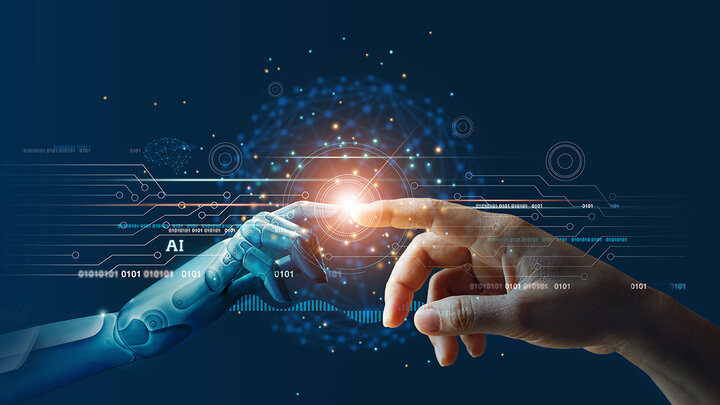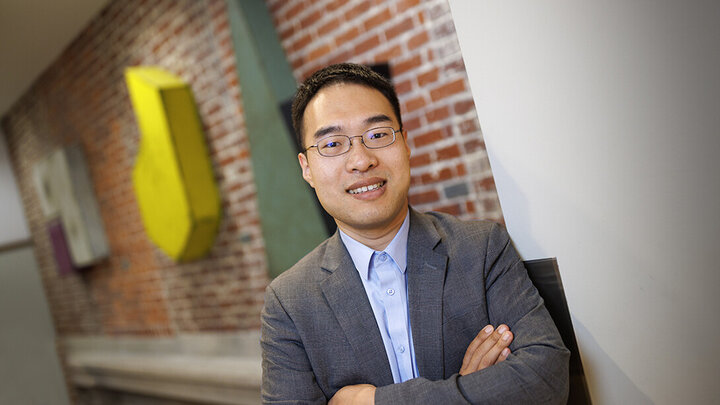In just a few short years, artificial intelligence has rapidly evolved from a futuristic computing concept to a major part of everyday life. As AI tools become increasingly popular and broadly used for a wide variety of purposes, computer scientists continue to expand their research endeavors to explore new possibilities and solutions. The latest project in the University of Nebraska–Lincoln’s School of Computing proposes that the biological systems that initially inspired the development of AI could be expanded towards bio-hybrid systems that use intelligence directly from living cells.
With a new grant from the National Science Foundation and in collaboration with Princeton University, Associate Professor Sasitharan Balasubramaniam aims to discover how natural structures in bacterial gene networks could be leveraged for AI applications.
Artificial intelligence systems are constructed similarly to the neural networks found in the human brain. While scientists have tried to utilize living neurons for similar computing research, neurons present a number of challenges, including ethical concerns and fragility outside of ideal environmental conditions. Bacteria, however, are much more resilient, and possess a network within them that Balasubramaniam believes could be similarly exploited.
“Even though they don't have a brain per se, they have a network structure that looks like an artificial neural network, and if it has that network structure, why can’t we use it for computing?” Balasubramaniam said. “Bacteria are way easier to maintain, so I see it as a more viable future to connect to a computer than neurons.”
Balasubramaniam and his research team will work to establish an electrical and chemical communication mechanism by connecting the electroactive bacteria, Shewanella oneidensis, to a computing system. Using the concept of electrogenetics, electrical pulses will be sent to stimulate target genes of the bacterial gene regulatory artificial neural networks (GR-ANN), causing a chemical reaction for computing and producing electrical output that can again be interpreted by the computer.
Balasubramaniam said creating this communication loop between the bacteria and the computer system, may actually enable the bacteria to perform some of the computer’s tasks.
“What we're trying to do is offload a lot of the work and everyday tasks from a typical silicon-based computer onto cells and let it run through the cell substrate,” Balasubramaniam said.
“For example, image recognition. We're trying to upload it to the cells and ask the cells to do that. If we can find a task the bacteria can solve, let's just offload it.”
By redistributing the computer’s workload and allowing the bacterial cells to do more of the heavy lifting, the project presents a variety of energy-saving possibilities. As the amount of energy required to power AI applications becomes a growing environmental concern for many, discovery of a solution is one of the primary goals of the project.
“Computers, especially AI models, are generating and utilizing a lot of energy. Energy is a huge problem, but I think bacteria could be a game changer,” Balasubramaniam said. “We're hoping that this is one way of creating new energy-efficient computers in the future, and maybe we can even exploit natural intelligence from the cell to help us to improve knowledge in AI.”
Balasubramaniam said if the project is successful, it could not only revolutionize bio-hybrid computer systems and architecture, but it could also potentially lead to other inventions, such as implantable pill devices with programmed bacterial computing that bridge the healthcare and technology fields.
“Bacteria cause a lot of infections in wounds, so one thing you might have is a smart pill that's connected to a computer. Inside the smart pill, you have engineered bacteria with an AI capability inside it,” Balasubramaniam said. “Those bacteria will interact with the natural bacteria that's causing the infection, and then you try to control it.”
Ultimately Balasubramaniam hopes his project will lead to more discoveries and open new possibilities within the biotechnology field as well as many other fields of science and research.
“I'm hoping it's only a starting point, but that it will allow a future rethink in the way we design computers,” Balasubramaniam said. “Just think of it as like a neural network, but instead of it being on a silicon chip, it's inside a cell.”



